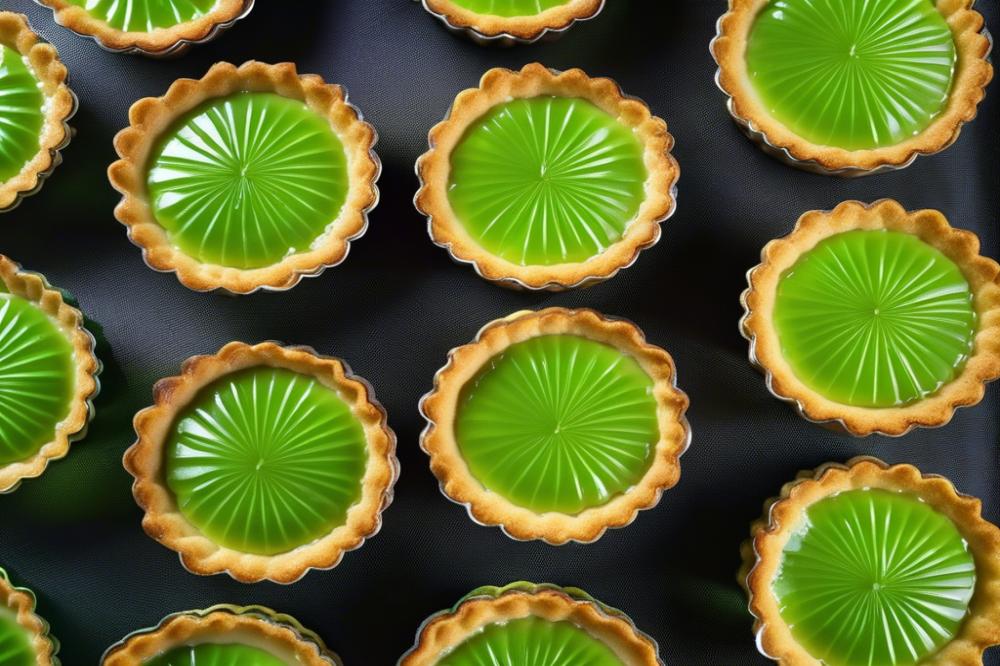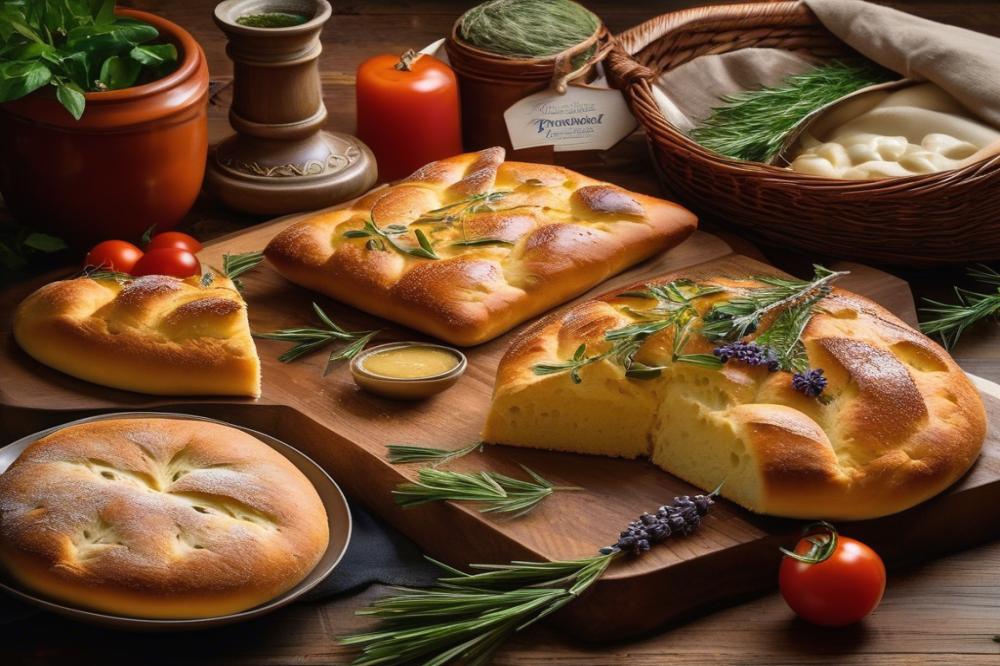Introduction
Pandan and Coconut Custard Tarts are a delightful fusion of flavors that showcase the best of tropical cuisine. This dessert highlights the vibrant essence of Asian style baking, bringing a unique touch to pastry lovers around the world. Asian pastries often blend sweet and savory, presenting a fascinating exploration of texture and taste.
Tropical flavors play a crucial role in desserts from this region. They introduce an array of tastes that evoke the warmth and richness of the tropics. With ingredients like pandan leaves and coconut cream, these sweet treats capture the essence of their origins.
Pandan leaves add a fresh, grassy note, while coconut cream provides a rich, creamy foundation. Together, they create a balance of flavors that is both aromatic and satisfying. When making the tarts recipe, the custard recipe becomes the star, combining these key ingredients into a luscious filling. The end result is a beautiful arrangement of Coconut Tarts, perfect for any occasion or simply to enjoy at home.
Understanding Pandan Custard

Pandan leaves are a staple in Southeast Asian cuisine, known for their striking green hue and aromatic fragrance. Their sweet, nutty flavor often reminds people of vanilla, but with a fresher twist. This unique flavor makes them perfect for desserts and sweet treats.
When used in baking, pandan leaves transform ordinary dishes into something visually stunning. The vibrant green color of the leaves infuses custard, creating a beautiful contrast against the creamy coconut cream. This combination results in an inviting dessert that is sure to catch the eye.
In creating a custard recipe that highlights pandan, you start by infusing the leaves in warm coconut milk, allowing their flavor to seep in. After straining, the aromatic milk is whisked with eggs and sugar until smooth. This mixture is then poured into tarts, ready for baking. The process is rather simple, making it accessible for anyone eager to try making Asian pastries at home.
Pandan is not only delightful in desserts but also boasts several health benefits. The leaves are known for their anti-inflammatory properties and can help with digestion. Additionally, they are rich in antioxidants. Such attributes make them a smart addition to many recipes.
In summary, pandan adds complexity and charm to custard tarts, elevating the flavors and enhancing the overall experience of sweet treats. Embracing these tropical flavors opens up a world of baking possibilities.
Coconut Cream: A Key Ingredient

Coconut cream is an essential element in many dessert recipes, especially in Asian pastries. This rich, creamy substance is made from the flesh of mature coconuts. When used in sweet treats, it adds a delightful richness that’s hard to resist. Its smooth texture brings a comforting element to desserts like custard tarts. In many cultures, coconut cream is celebrated for its unique ability to enhance flavors.
When comparing coconut cream to other coconut products, a few things stand out. Coconut milk, for example, contains more water and is lighter. Coconut cream, on the other hand, is thicker and carries a more intense flavor. Shredded coconut can add texture but lacks the creamy essence that coconut cream provides. Using cream in recipes can create a more satisfying mouthfeel, perfect for a tarts recipe.
Flavor and texture are crucial in any custard recipe, particularly in custard tarts. Coconut cream enhances the tropical flavors, creating a luscious, creamy base. This ingredient complements the sweetness of other components, balancing the entire dish. Guests will often rave about the smooth consistency it brings. Baking with coconut cream ensures that each bite is indulgent and flavorful.
Nutritionally, coconut cream has its benefits as well. It is rich in calories and fat, particularly saturated fat, which provides energy. While some may avoid fats, there are healthy properties in coconut. It contains lauric acid, which may support heart health. When considering an ingredient for desserts, coconut cream delivers both flavor and nutritional oomph, making it a worthwhile addition.
Preparing the Tart Base

Ingredients Needed for Tart Crust
To create the perfect tart crust, gather the following ingredients: all-purpose flour, unsalted butter, granulated sugar, salt, and an egg. These components combine to form a flaky and delicious base for your custard tarts. You may also need a little cold water to help bind everything together.
Step-by-Step Method for Making the Tart Base
Start by mixing flour, sugar, and salt in a bowl. Cut in the chilled butter until the mixture resembles coarse crumbs. Next, beat the egg and mix it in. Add cold water, a tablespoon at a time, until a dough forms. Chill it in the refrigerator for at least 30 minutes. Roll out the dough on a lightly floured surface. Carefully place it into your tart pans and trim the edges. Poke small holes in the base with a fork to prevent bubbling. Finally, blind bake the crust at 375°F (190°C) for about 15 minutes, or until lightly golden.
Tips for Achieving a Perfect Crust
Past experiences often lead to better techniques. Using cold ingredients is key to a flaky texture. Chilling the dough before rolling helps maintain its shape during baking. Further, pressing the crust gently into the pan prevents shrinkage. Always keep an eye on the crust while it bakes to avoid over-browning.
Suggestions for Alternative Crust Variations
Experiment with different crust options for a twist on the classic recipe. Ground nuts, like almonds or pecans, can add a rich flavor. A graham cracker crust offers a sweeter, crunchier base. For a unique approach, try using crushed cookies. Each alternative lends its own character to the sweet treats. Consider a coconut-flavored crust to echo the tropical flavors in the filling. Each choice adds a delightful surprise to your pandan and coconut custard tarts.
Making the Pandan and Coconut Custard Filling
Ingredients for the Custard Filling
Creating the perfect custard filling requires a blend of vibrant ingredients. Gather the following:
- 1 cup coconut cream
- 1/2 cup sugar
- 3 large eggs
- 1/4 cup pandan juice (freshly squeezed from pandan leaves)
- 1 teaspoon vanilla extract
- 1/4 cup cornstarch
- 1/4 cup water
- Pinch of salt
Step-by-Step Method to Prepare the Custard
Start by whisking the sugar and eggs together in a mixing bowl. The mixture should be light and fluffy. Add in the coconut cream and pandan juice. Stir until everything is well combined.
In another bowl, mix cornstarch with water until smooth. Gradually incorporate this into the egg mixture. A pinch of salt enhances the flavors, so don’t skip it.
Now, pour the mixture into a saucepan over medium-low heat. Stir continuously as it cooks. Watch closely; the custard will thicken and begin to bubble. This usually takes around 5 to 7 minutes.
Once thickened, remove the pan from the heat. Add vanilla extract for an extra layer of flavor. Transfer the custard into a bowl and let it cool slightly before using it in your tarts recipe.
Importance of Temperature Control During Baking
Temperature control plays a crucial role in baking custard tarts. An overly hot oven can cause the custard to curdle, leading to a grainy texture. Maintaining a steady temperature ensures a smooth, silky filling. Preheat your oven carefully and keep an eye on the baking times.
Common Mistakes to Avoid While Making Custard
Avoid rushing the process. Cooking the custard too quickly can ruin its texture. Be patient and stir continuously. Another common error is not straining the custard before pouring into tarts. This step removes any lumps and ensures a pristine custard.
Lastly, don’t overlook the cooling period. Allow the custard to set before baking the tarts. This will help you achieve that creamy consistency and delicious tropical flavors that custard tarts are known for. Each step is important for that perfect dessert.
Assembling and Baking the Tarts
Filling tart shells with custard is both fun and simple. Begin by preparing your tart shells. If they’re pre-baked, that’s even better. Pour the custard mixture carefully into each shell. Leave a bit of space at the top to avoid any spilling over while baking. A ladle or a measuring cup can help with this task.
Baking Time and Temperature Guidelines
Baking these sweet treats requires the right temperature. Aim for a preheated oven set to 350°F (175°C). The tarts typically need about 20 to 25 minutes to bake. Timing can vary, so keep an eye on them.
Visual Indicators for Doneness
Recognizing when the custard tarts are done is essential. Look for a firm, yet slightly jiggly texture in the center. The edges should be a light golden brown. Once you see these signs, it’s time to take them out of the oven. Allow the tarts to cool before tasting them.
Optional Toppings to Enhance Presentation and Flavor
Additions can elevate your custard recipe. Fresh fruits like mango or berries complement the tropical flavors beautifully. A sprinkle of toasted coconut can bring a crunch and aroma, enhancing the overall experience. Drizzle some coconut cream on top for extra sweetness. Mint leaves can also provide a refreshing contrast.
Serving Suggestions and Variations
Ideas for Serving Pandan and Coconut Custard Tarts
Serving these delightful tarts can be simple yet elegant. Present them on a decorative platter for a colorful display at gatherings. You can garnish the top with shredded coconut or fresh mint leaves for a vibrant touch. Consider adding a dollop of whipped cream next to each tart for that extra indulgence. These sweet treats also look stunning when paired with fruit slices, such as mango or kiwi.
Suggested Pairings with Beverages or Fruits
Beverages can enhance the enjoyment of these pastries significantly. Pair the tarts with a refreshing iced tea, like jasmine or green tea. Coconut-infused cocktails also complement the tropical flavors perfectly. For a non-alcoholic option, coconut water is a great choice. Fresh fruits, like strawberries or pineapple, can lighten up the dessert experience while adding natural sweetness.
Variations to Try: Flavors and Ingredients
Experimenting with flavors can elevate your custard recipe. Adding lime or lemon zest will create a citrus twist that brightens up the dish. Coconut cream can be blended with chocolate for a rich variation. For a different texture, consider mixing in some crushed nuts, like almonds or cashews. You may also try using pandan leaves in different forms, like powders or extracts, to adjust the intensity of flavor.
How to Personalize the Tart for Special Occasions
Personalization can make your tarts even more special. For birthdays, add colorful sprinkles or edible glitter on top. You can create themed tarts by incorporating seasonal fruits or colors. During festive seasons, consider infusing your custard with spices like cinnamon or nutmeg. Customizing the tart shapes can also add a unique flair. Use heart-shaped molds for Valentine’s Day or star shapes for celebrations. Engaging in baking with friends or family can make this an enjoyable experience, too.
Sweet Reflections: The Allure of Pandan and Coconut Custard Tarts
Pandan and coconut custard tarts bring together a delightful blend of flavors that is hard to resist. The creamy texture and aromatic notes make them a standout dessert. Their vibrant green color and rich coconut aroma are enough to draw anyone in. For those unfamiliar with these sweets, they offer a soft introduction to Asian pastries. Each bite delivers a taste of tropical paradise.
Exploring Asian-inspired baking can be a rewarding experience. Many recipes integrate different ingredients and methods. This can lead to delicious, unexpected results. Home bakers should not shy away from experimentation. Trying new flavors and techniques can broaden your culinary skills. It also adds an exciting twist to your dessert repertoire. Who knows what other delightful treats await? You might discover a newfound passion for these unique flavors.
Tropical tastes have a special charm that transforms ordinary dishes. Many familiar ingredients can be combined in different ways to create special cookies, cakes, and tarts. Incorporating these flavors into your baking allows for versatile desserts that surprise and delight. Whether it’s pandan or coconut, each flavor contributes a distinct edge. In the end, these sweets are not just desserts; they are a celebration of culture and creativity.
So, embrace the flavors of the tropics. Let them inspire you to venture into the world of Asian baking. With each tart, you’ll capture a little bit of sunshine and warmth. Explore new horizons with your baking experiments, and remember: something delicious is just a whisk away!



